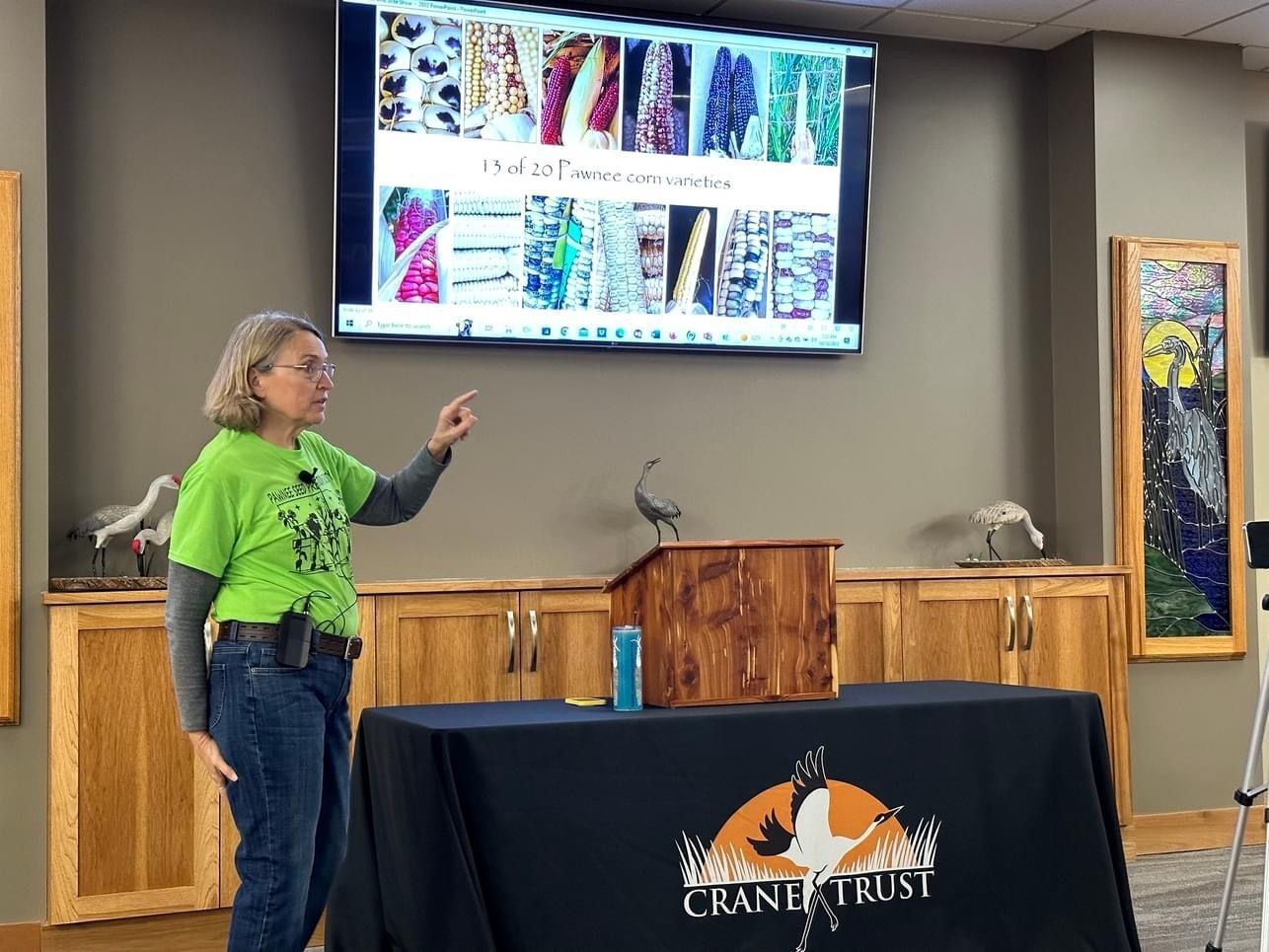Mission
Through land management, scientific research, and education, our mission is to protect and maintain the physical, hydrological and biological integrity of the Big Bend area of the Platte River so that it continues to function as a life support system for whooping cranes, sandhill cranes and other migratory bird species.
We Accomplish Our Mission in the Following Ways
We purchase, manage and restore habitat for cranes and other migratory birds.
The Crane Trust preserves migratory habitat by purchasing and managing land in and along the central Platte River, and currently owns and/or manages approximately 10,000 acres of land. We research, develop and implement land management practices that maintain native environments and provide habitat for cranes and other migratory birds. We seek to improve riverine, wetland and grassland habitat by removing invasive weeds, clearing overgrowth and restoring native prairie. Without this habitat, cranes would not have an adequate place to rest and refuel on their long migrations, ultimately causing their numbers to decline.
We determine what Whooping Cranes and Sandhill Cranes need to survive during their migrations.
Our research is focused on answering questions about crane habitat needs. Our scientists have fit Whooping Cranes with GPS telemetry devices and are tracking the birds on their 5000-mile round-trip migration. This project is providing new information about crane habitat needs, and causes and locations of mortality—data that will help us create solutions to conserve the species. Additionally, our researchers study the abundance and distribution of migrating Sandhill Cranes as they “stage” on the Platte River. This study helps us determine what habitat management practices are most beneficial to cranes.
We represent the long-term future of cranes.
The Crane Trust advocates for cranes in a variety of settings aimed at ensuring a future for these magnificent birds. Our staff members serve on local, national and international committees and boards, sharing their knowledge and networking with partners to achieve crane conservation goals. For example, our leadership on the Governance Committee for the Platte River Recovery Implementation Program resulted in more water in the Platte River and 29,000 more acres of habitat for cranes and other migratory birds.
We serve as a resource center.
The Crane Trust hosts scientists and students from all over the world, eager to study cranes, migratory birds, wetlands, native prairie and progressive land management practices. These researchers are providing cutting-edge solutions to issues affecting cranes and other species.
Sandhill Crane Migration Map

We serve as a resource center to educate people about our efforts


